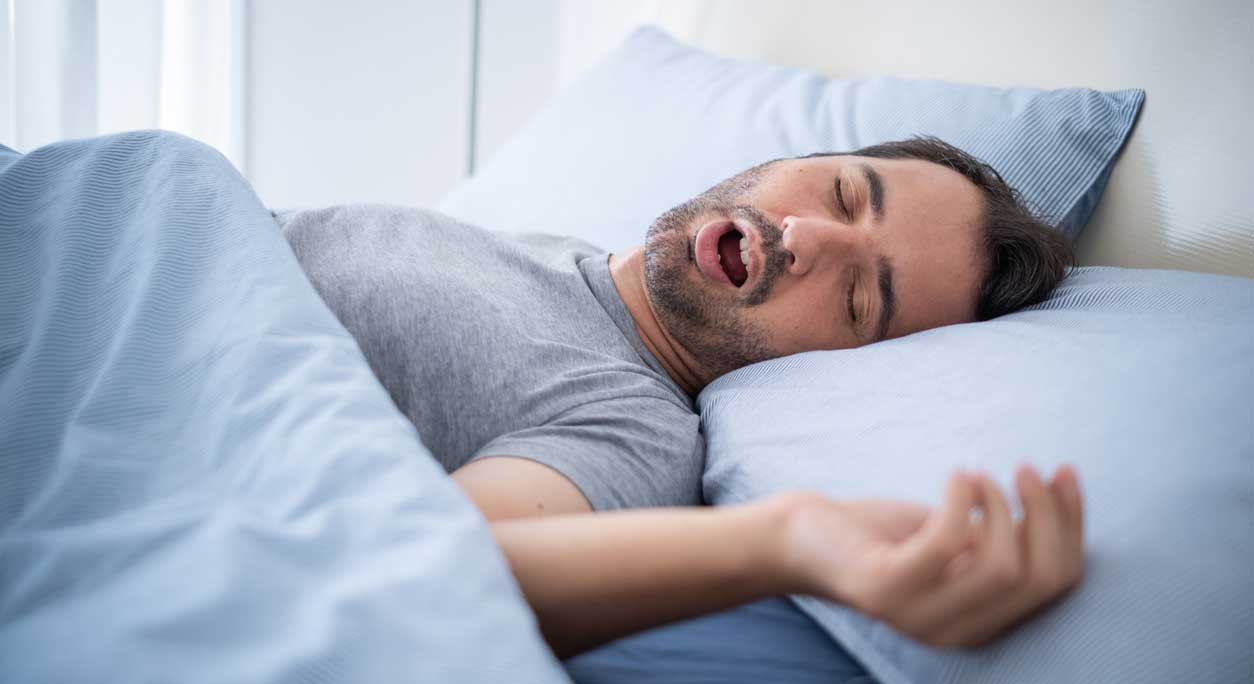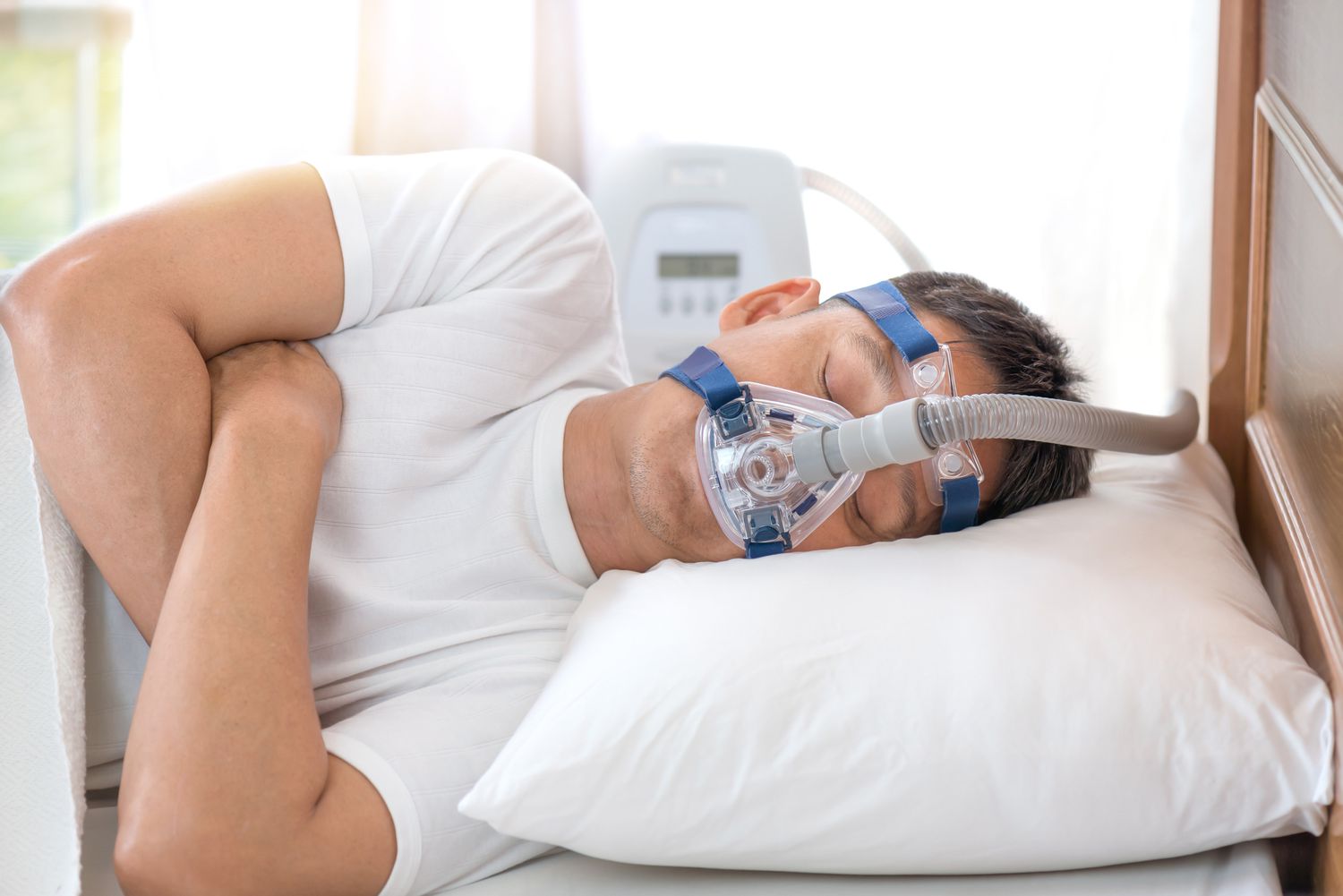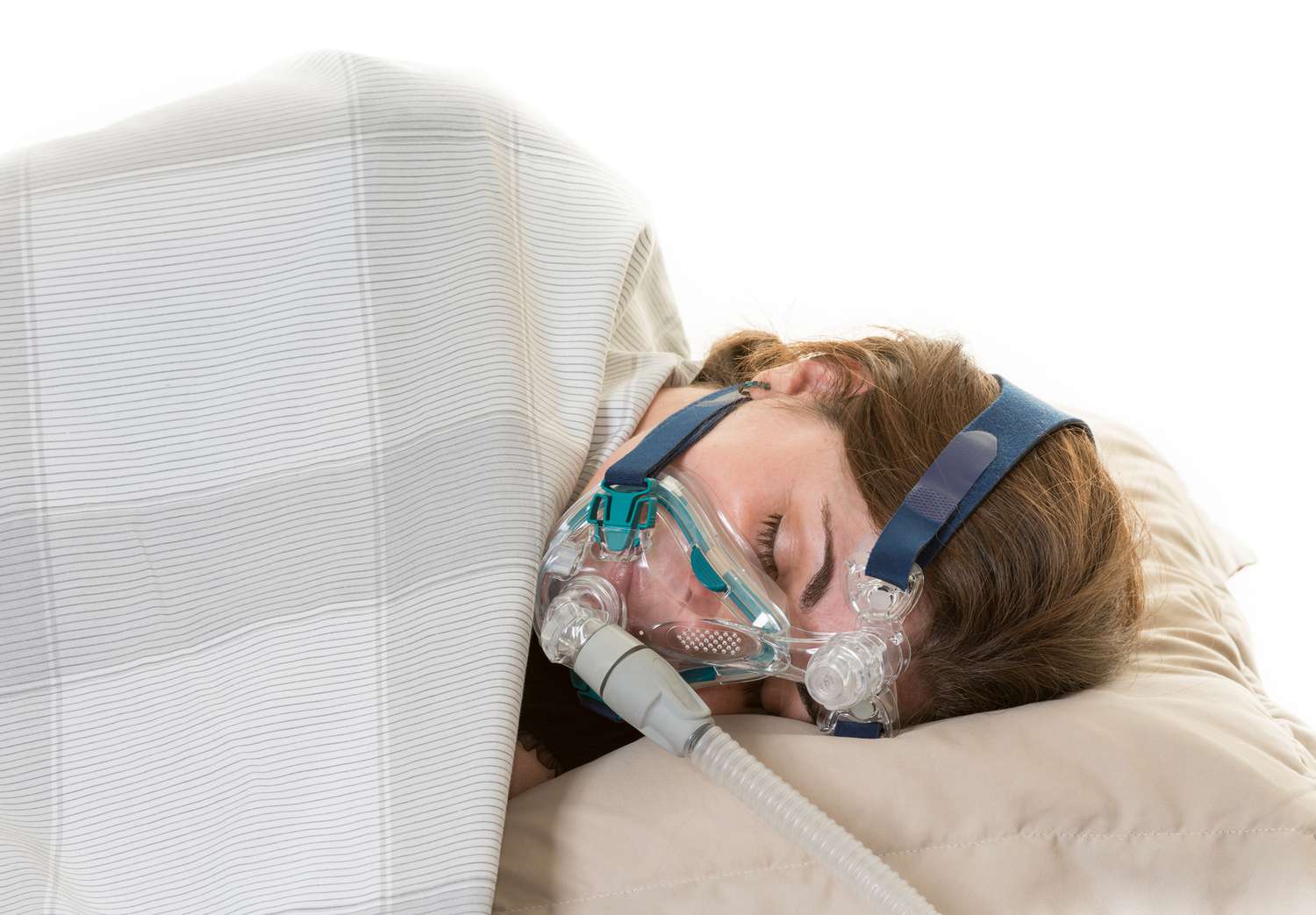What Are Some Sleep Apnea Treatment Alternatives?
Although CPAP therapy is well-known for its effectiveness, some patients may not be able to tolerate or experience any kind of pain with it. In this article about sleep apnea treatment alternatives, we will discuss non-invasive methods that can help those with sleep apnea.
Author:Katharine TateReviewer:Karan EmeryFeb 20, 20243.3K Shares62.2K Views

The health and well-being of individuals can be profoundly affected by sleep apnea, a prevalent sleep disorder marked by episodes of difficulty breathing while sleeping. Although CPAP therapy is well-known for its effectiveness, some patients may not be able to tolerate or experience any kind of pain with it. In this article about sleep apnea treatment alternatives, we will discuss non-invasive methods that can help those with sleep apnea.
Continuous Positive Airway Pressure (CPAP) Therapy
Obstructive sleep apnea can be effectively treated with Continuous Positive Airway Pressure (CPAP) therapy. In order to maintain an open airway and avoid breathing pauses, continuous positive airway pressure (CPAP) requires the use of a mask attached to a machine that continuously produces pressurized air.
CPAP treatment successfully stops snoring and lowers the frequency of apnea episodes by preserving a steady airflow, which enhances sleep quality and attentiveness during the day.
With pressure settings that may be changed to suit specific demands, CPAP therapy offers the best possible comfort and efficacy. While using the machine and wearing the mask while you sleep may take some getting used to, continuous positive airway pressure (CPAP) therapy is the gold standard for treating sleep apnea and, when used regularly, offers major benefits for general health and well-being.
Bi-level Positive Airway Pressure (BiPAP) Therapy
When compared to conventional Continuous Positive Airway Pressure therapy, Bi-level Positive Airway Pressure (BiPAP) therapy provides clear advantages for treating obstructive sleep apnea and other respiratory problems. BiPAP provides two distinct pressure levels during breathing: a higher pressure during intake to expand the airway and a lower pressure during expiration to lessen breathing effort.
This is in contrast to CPAP, which maintains a constant pressure throughout the breathing cycle. This dual-pressure approach improves compliance and comfort, especially for those who have trouble breathing out against the continuous pressure of CPAP.
Patients with particular medical disorders or breathing patterns are frequently administered BiPAP therapy, which can be customized to meet each patient's needs and preferences. BiPAP therapy significantly minimizes apnea events, improves sleep quality, and boosts overall respiratory function by providing customized pressure support, all of which contribute to improved health and well-being.
Adaptive Servo-Ventilation (ASV)
For the treatment of central sleep apnea (CSA) and complicated sleep apnea syndrome (CompSAS), which are disorders marked by irregular breathing patterns while you sleep, an innovative technique called adaptive servo-ventilation (ASV) is used. ASV continually monitors a person's breathing and modifies air pressure delivery in real-time to maintain a normal breathing pattern. It does this by utilizing advanced algorithms and sensors.
ASV is different from other positive airway pressure therapies in that it adjusts dynamically, which makes it especially useful for those whose breathing patterns change. ASV therapy helps stabilize breathing, lessen the frequency of apnea episodes, enhance overall sleep quality, and raise oxygenation levels by offering individualized assistance catered to the user's particular breathing demands.
ASV therapy provides a comprehensive way to address these complex breathing diseases and encourage better sleep and general health. It is commonly given for those with CSA, CompSAS, or treatment-emergent central sleep apnea.
Oral Appliance Therapy
Wearing a dental appliance that is specially fitted while you sleep is known as oral appliance therapy, and it is a non-invasive treatment option for snoring and obstructive sleep apnea (OSA).
These devices function by realigning the tongue and lower jaw to maintain the airway open and free of obstructions. mouth appliances are a popular substitute for continuous positive airway pressure therapy, which requires wearing a mask attached to a machine.
CPAP therapy is bulky and inconvenient for some people. In contrast, mouth appliances are discrete, portable, and easy to use. Those with mild to severe OSA or those who have trouble tolerating CPAP therapy can benefit most from oral appliance therapy.
For many people with sleep-disordered breathing, it delivers substantial benefits in the quality of their sleep, their alertness during the day, and their general quality of life. It is a practical and efficient way to treat their disease.
Surgery
When all other treatments for obstructive sleep apnea have failed or are not appropriate, surgery is a viable alternative. Depending on the underlying cause of airway blockage, a number of surgical procedures, including tonsillectomy, maxillomandibular advancement, and uvulopalatopharyngoplasty (UPPP), may be recommended.
These operations are designed to enlarge the airway and enhance airflow while you sleep by removing extra tissue, correcting structural defects, or repositioning anatomical features. Due to the risks and potential problems involved with surgical procedures, surgery is usually considered a last resort, even if it can be beneficial in improving sleep quality and reducing the severity of OSA symptoms.
Furthermore, individual characteristics like the kind and severity of airway blockage, general health, and compliance with post-operative care can all affect how well surgery goes. Therefore, the best course of treatment for each patient with OSA must be determined after a thorough evaluation and consultation with a healthcare professional.
Hypoglossal Nerve Stimulation
A new treatment for obstructive sleep apnea called hypoglossal nerve stimulation entails implanting a tiny device beneath the skin in the chest region. This device is linked to the hypoglossal nerve, which regulates tongue movement.
The device detects breathing patterns as you sleep and stimulates the hypoglossal nerve mildly, which causes the tongue to migrate forward and keeps your airway from collapsing. Without requiring a mask or machine, this stimulation successfully maintains the airway open by synchronizing with the person's natural breathing rhythm.
When someone with moderate to severe OSA is unable to tolerate continuous positive airway pressure therapy or has not responded to other therapies, hypoglossal nerve stimulation is usually advised. Hypoglossal nerve stimulation has been shown in clinical trials to significantly improve sleep apnea severity, daily drowsiness, and quality of life. For people looking for alternative treatments for OSA, this therapy option appears promising.
Lifestyle Changes
Modifying one's lifestyle is essential for controlling obstructive sleep apnea (OSA) and enhancing the general quality of one's sleep. These adjustments frequently involve losing weight with a balanced diet and consistent exercise because being overweight might worsen airway blockage as you sleep.
It is crucial to abstain from alcohol and sedatives before bed since they might relax the throat muscles and exacerbate symptoms of open airway syndrome. Another helpful tip to keep the tongue and soft tissues from collapsing into the airway is to sleep on one's side as opposed to the back. Giving up smoking will also lessen airway irritation and congestion, which can enhance breathing even more when you're sleeping.
Even though lifestyle modifications by alone might not be able to cure OSA entirely, they can greatly lessen its severity and work in conjunction with other treatment choices like oral appliance therapy or continuous positive airway pressure therapy to improve sleep quality and general health.
Positional Therapy
Positional therapy encourages people to sleep in positions that decrease airway obstruction as a non-invasive means of managing obstructive sleep apnea. It emphasizes avoiding resting on one's back, or supine position, as this might aggravate symptoms of open airway syndrome by causing the tongue and soft tissues to fall into the airway.
Positional therapy may entail the use of specialized equipment, such as wearable technology or positional pillows, to warn patients when they are dozing on their backs and encourage them to switch positions. Positional therapy attempts to lessen the frequency and intensity of apnea episodes during sleep by encouraging side sleeping or other alternative sleeping postures.
Positional therapy can be a useful addition to other treatments like continuous positive airway pressure therapy or oral appliance therapy, even though it might not be helpful for everyone with OSA. This is especially true for people with mild to moderate OSA who primarily experience apnea episodes when sleeping on their backs.
Nasal Decongestants
Medications known as nasal decongestants are frequently used to treat nasal congestion, which can worsen obstructive sleep apnea symptoms and lead to airway blockage. Nasal decongestants facilitate better airflow through the nose during sleep by lowering edema and irritation of the nasal passages.
These drugs come in a number of formats, such as oral pills, nasal sprays, and drops. Nasal decongestants are generally not advised for long-term use due to the risk of rebound congestion and potential side effects like nasal dryness and irritation, even though they can temporarily relieve nasal congestion and may be beneficial for people with OSA who have nasal obstruction as a contributing factor.
To ensure the safe and appropriate use of nasal decongestants in managing symptoms of open-air breathing, it is crucial to speak with a healthcare practitioner before using them, particularly if you have pre-existing medical issues or are taking other drugs.
Sleep Apnea Treatment Alternatives - FAQ
Is There An Alternative Treatment For Sleep Apnea?
Alternative therapies, like surgery or oral appliances, and lifestyle changes like weight loss, exercise, and physical or positional therapy can also ease OSA symptoms. Once diagnosed, check with your insurance provider to see what types of sleep apnea treatment your plan covers.
Which Herb Is Good For Sleep Apnea?
Some herbs, such as ginger, fenugreek and turmeric have anti-inflammatory properties that can help reduce sleep apnea symptoms.
What Is The Most Successful Treatment For Sleep Apnea?
Although CPAP is the most successful and commonly used method of treating obstructive sleep apnea, some people find the mask uncomfortable or loud. However, newer machines are smaller and less noisy than older machines. And there are a variety of mask designs for individual comfort.
Final Thoughts
It is important to acknowledge the wide variety of sleep apnea treatment alternatives available, even if CPAP therapy is still the gold standard for managing sleep apnea. Patients looking for effective treatment from sleep apnea symptoms have hope in these non-invasive therapies, which range from lifestyle alterations to mouth appliances. Find individualized methods to improve sleep quality and general well-being by studying and integrating these alternatives into treatment regimens.
Jump to

Katharine Tate
Author

Karan Emery
Reviewer
Latest Articles
Popular Articles

